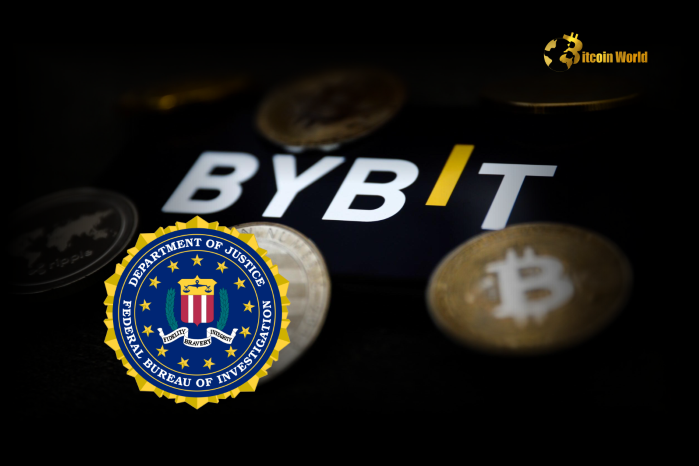
Summary Once riding high on Bitcoin ETF approvals, institutional interest, and political optimism, the crypto market has suffered an $800 billion wipeout, record ETF outflows, and a sharp decline in investor confidence. Hopes for a crypto-friendly Trump administration have faded, with little regulatory progress beyond speculative memecoin launches. Meanwhile, institutional investors are retreating amid security breaches and market instability. With memecoin mania collapsing and security vulnerabilities exposed, the industry faces a critical test: can it mature into a legitimate asset class, or will its speculative nature continue to undermine its long-term credibility? In the ever-changing world of financial markets, cryptocurrencies have been hailed as both a revolutionary force and a speculative bubble. Just a few months ago, optimism was at an all-time high. Bitcoin exchange-traded funds (ETFs) had gained regulatory approval, institutional investors were showing greater interest, and political shifts - especially with Donald Trump’s reelection - hinted at a more crypto-friendly environment (we published a piece on it, linked here ). The narrative of crypto becoming a mainstream asset class gained traction, with proponents arguing that digital currencies could provide an alternative financial system immune to the volatility of traditional markets. Yet, in just a few months, that optimism appears to have crumbled. More than $800 billion has been wiped from the market in recent weeks, investor confidence has nosedived, and the very political forces expected to support crypto instead appear to have left it in limbo. Liquidations have mounted as leveraged traders are forced to exit positions, while record ETF outflows signal that investor sentiment may be souring. Bitcoin ( BTC-USD ), once hailed as digital gold, has seen its price plummet rapidly, while altcoins have fared even worse. The excitement that once surrounded decentralized finance (DeFi), non-fungible tokens (NFTs), and blockchain-based applications has seemingly dissipated, leaving behind a sector that once again finds itself struggling to prove its long-term value. With all these challenges, the key question now is not simply whether crypto will bounce back in the short term, but whether it can establish itself as a resilient financial asset class? Can it weather this storm and emerge stronger, or is this downturn a sign of deeper structural issues that could limit its future growth? A Crisis of Expectations The current crisis stems as much from misaligned expectations as from tangible losses. Bitcoin, seen by its ardent proponents as an uncorrelated hedge against monetary instability, has instead moved in lockstep with broader risk assets. In the aftermath of a euphoric run-up, the sector finds itself trapped in a vicious cycle of liquidity drains, regulatory uncertainty, and security breaches - factors that have cast doubt on its fundamental promises. The numbers are indeed sobering. The total market capitalization of cryptocurrencies has fallen by a quarter, retreating to $2.78 trillion. Bitcoin itself, the flagship cryptocurrency and generally regarded as the most resilient, has shed 20% in a month, dropping below $85,000. Ethereum ( ETH-USD ), long touted as the bedrock of the decentralized finance revolution, has fallen by 31%, while Solana ( SOL-USD ), a favorite among memecoin traders and enthusiast, has plunged by over 42%. This does not appear to be merely a cyclical downturn; it is a recalibration of the sector’s narrative. Comparing crypto’s performance to traditional markets further highlights its struggles. The CoinDesk 20 Index, which tracks the largest and most liquid digital assets, has dropped more than 22% year-to-date, underperforming the S&P 500, which has shown relative resilience despite broader market turmoil. While equity markets have absorbed macroeconomic shocks with measured declines, the volatility in crypto has amplified its downward trajectory, leading investors to question whether it remains a viable long-term asset class. The Politics of Crypto: Trump’s Unmet Promises Much of the sector’s optimism was tied to political developments - particularly Donald Trump’s election victory and his decidedly favorable stance toward the crypto sector. Many crypto investors, buoyed by his attendance at crypto-centric conferences and his shift in support of deregulatory rhetoric, anticipated a wave of legislative changes that would normalize digital assets within mainstream finance. Some even speculated that a Trump-led government might consider holding Bitcoin on the U.S. balance sheet, as Trump floated the idea of a national Bitcoin reserve a few times while on the campaign trail, or granting crypto-friendly banks greater freedom. Reality has been far less accommodating, at least so far. Instead of a robust regulatory embrace, the Trump administration has delivered little more than headline-grabbing stunts - most notably the launch of a Trump-branded memecoin, which collapsed by 83% in value within weeks. The failure to implement substantive policy changes has left the sector in a state of disappointment. Rather than legitimizing digital assets, Trump’s involvement in the memecoin frenzy may have only reinforced crypto’s image as a speculative Wild West in the public imagination. Adding to the malaise, Trump`s trade policies - including a slew of tariffs - have heightened market volatility, prompting many investors to seek safer assets. Instead of serving as an alternative to fiat instability, as its proponents have long claimed, crypto has once again been treated like other high-risk assets and sold off accordingly, mirroring its behavior in past crises. The Structural Cracks: Liquidations, Hacks, and Institutional Retreat Beyond politics, the sector appears to be reeling from its own internal dysfunctions. Two multibillion-dollar liquidations in February wiped out leveraged positions, triggering cascading sell-offs. Meanwhile, the largest-ever crypto hack - a $1.5 billion heist from the Bybit exchange - has reignited concerns over security vulnerabilities. Far from achieving the impenetrability once promised by blockchain enthusiasts, centralized exchanges remain highly susceptible to cyberattacks. Institutional investors, once hailed as crypto’s saviors, also appear to be retreating. Bitcoin ETFs have seen six consecutive days of outflows, with a record $1 billion exiting in a single day. The enthusiasm that accompanied the regulatory approval of crypto ETFs in early 2024 has evaporated as investors come to terms with the reality that Bitcoin, despite its institutional packaging in an ETF wrapper, remains volatile and largely speculative. End of the Memecoin Era? One particularly striking feature of the latest downturn is the implosion of the memecoin frenzy. What began as a niche segment of the market - one that many saw as catering to internet culture - has now become emblematic of crypto excess. Political figures, from Argentina’s President Javier Milei to US First Lady Melania Trump, have dabbled in memecoin launches, often to disastrous effect. The bubble, once fueled by social media hype and the promise of astronomical returns, has burst - leaving a trail of disillusioned retail investors. This collapse underscores a deeper issue: crypto’s reliance on speculation rather than fundamentals. For years, proponents have argued that digital assets are ushering in a decentralized financial revolution and have even touted crypto as a legitimate store of value - a more robust alternative to fiat currency. Yet, time and again, the industry has demonstrated that, for many participants, it remains little more than a high-stakes casino. Despite the turmoil, it is too soon to write crypto’s obituary. Market cycles are nothing new, and digital assets have a history of rebounding from apparent death spirals. However, the industry now faces a critical inflection point. Regulatory clarity is urgently needed. Under former SEC Chair Gary Gensler, the U.S. Securities and Exchange Commission maintained an adversarial stance toward crypto. A structured, transparent regulatory framework could provide the foundation for long-term stability, but whether that materializes remains uncertain. Trump’s pick for SEC chair, Paul Atkins, is seen by many as a crypto-friendly regulator, raising hopes for a more accommodating approach. At the same time, institutional investors require stronger assurances regarding security risks - something that can only be addressed through a combination of regulatory oversight and technological innovation. However, meaningful progress in that area may be difficult to achieve, as the Trump administration appears focused on widespread budget and spending cuts. The newly established Department of Government Efficiency (DOGE) - ironically named after the meme-inspired cryptocurrency Dogecoin - appears to be engaged in efforts to aggressively slash government spending, potentially restricting or even greatly diminishing the role of key regulatory bodies. More fundamentally, crypto must evolve beyond its speculative identity. The decentralized finance ((DEFI)) ecosystem has made strides, but it remains plagued by inefficiencies and security flaws. If blockchain technology is to fulfill its transformative potential, it must demonstrate real-world utility beyond price speculation. A Reckoning, Not a Requiem Crypto has weathered existential crises before. The collapse of Mt. Gox in 2014, the ICO bust of 2018, and the 2022 FTX scandal each seemed to signal the sector’s demise - yet each time, it adapted and rebounded. However, this reckoning is arguably the most consequential. Unlike previous crises, when crypto remained a niche market, it is now a mainstream asset class, accounting for nearly 5% of total U.S. market capitalization. The industry is no longer a scrappy upstart but a trillion-dollar sector facing the demands of institutional legitimacy. Its future will depend on how well it navigates its contradictions. If crypto is to be taken seriously, it must move beyond speculative excesses. The coming months will determine whether this downturn is a painful but necessary correction - or the start of a prolonged erosion of its credibility and influence. Original Source: The Milwaukee Company
Seeking Alpha
You can visit the page to read the article.
Source: Seeking Alpha
Disclaimer: The opinion expressed here is not investment advice – it is provided for informational purposes only. It does not necessarily reflect the opinion of BitMaden. Every investment and all trading involves risk, so you should always perform your own research prior to making decisions. We do not recommend investing money you cannot afford to lose.
Discover How Binance Rewards BNB Holders with MyShell Airdrops!

Binance offers MyShell Airdrops to reward BNB holders for deposits. Users can earn SHELL coins based on their BNB asset holdings. Continue Reading: Discover How Binance Rewards BNB Holders with MyShell Airdrops! The post Discover How Binance Rewards BNB Holders with MyShell Airdrops! appeared first on COINTURK NEWS . Seeking Alpha

Urgent FBI Warning: Crypto Platforms Must Block Transactions After Shocking Bybit Hack
Hold on to your digital wallets, crypto enthusiasts! The U.S. Federal Bureau of Investigation (FBI) has issued a stark warning that should send shivers down the spine of every crypto exchange and service provider. They’re urging everyone in the crypto space to take immediate action and block transactions tied to the staggering $1.4 billion Bybit hack . Yes, you read that right – billion with a ‘B’! This isn’t just another minor security breach; it’s a massive cyber heist, and the FBI is pointing fingers directly at a notorious culprit: North Korea’s Lazarus Group. Why is the FBI Issuing an Urgent Warning About the Bybit Hack? The FBI isn’t known for mincing words, especially when it comes to national security and financial crimes. Their public call to action regarding the Bybit hack underscores the severity of this situation. But why are they getting involved, and why is this so urgent? Here’s the breakdown: National Security Threat: The Lazarus Group, identified by the FBI as the perpetrators, isn’t just a random group of cybercriminals. They are a sophisticated, state-sponsored hacking organization linked to North Korea. Their activities are often aimed at generating revenue for the North Korean regime, which faces international sanctions. This makes the Bybit hack not just a financial crime, but a potential national security issue. Preventing Further Losses: The FBI’s warning is a proactive measure to prevent the stolen funds from being laundered and further disseminated throughout the crypto ecosystem. By urging crypto platforms to block associated transactions, they aim to cut off the flow of illicit funds and make it harder for the Lazarus Group to profit from their crime. Protecting the Integrity of Crypto: Incidents like the Bybit hack can erode trust in the cryptocurrency space. The FBI’s involvement signals a serious commitment to policing the digital asset world and protecting users and platforms from malicious actors. It’s about maintaining the integrity and long-term viability of the crypto market. Lazarus Group: Unmasking the Masterminds Behind the Crypto Heist So, who exactly is this Lazarus Group that the FBI is pointing to? They aren’t exactly newcomers to the world of cybercrime. Think of them as the James Bonds of the hacking world, but instead of saving the world, they’re emptying digital bank accounts. Here’s what you need to know about the Lazarus Group: North Korean Affiliation: The Lazarus Group is widely believed to be a state-sponsored hacking group operating under the Democratic People’s Republic of Korea (DPRK), commonly known as North Korea. Numerous cybersecurity firms and government agencies have linked them to the North Korean regime. History of High-Profile Attacks: They have been implicated in a string of audacious cyberattacks, not just in the crypto world but across various sectors. Their resume includes bank heists, ransomware attacks, and even the infamous Sony Pictures Entertainment hack in 2014. They are not shy about targeting big names and high-value targets. Sophisticated Tactics: The Lazarus Group is known for its advanced and evolving hacking techniques. They are adept at using malware, phishing scams, and social engineering to infiltrate systems and steal funds. They are constantly adapting their methods to stay ahead of cybersecurity defenses. Financial Motivation: A primary driver for the Lazarus Group’s cyber activities is believed to be generating revenue for the cash-strapped North Korean regime. Sanctions have severely limited North Korea’s access to traditional financial systems, making cybercrime a lucrative alternative source of income. The FBI’s confirmation of the Lazarus Group’s involvement in the Bybit hack is a significant development, adding another layer of seriousness to this already alarming situation. What Does This Mean for Crypto Platforms and Users? The FBI’s urgent appeal to crypto platforms has far-reaching implications for the entire cryptocurrency ecosystem. It’s a wake-up call, highlighting the ongoing risks and the need for robust security measures. But what does this really mean for platforms and individual users? For Crypto Platforms: Enhanced Security Protocols: This incident should serve as a catalyst for crypto platforms to re-evaluate and strengthen their security infrastructure. This includes investing in advanced threat detection systems, multi-factor authentication, and regular security audits. Transaction Monitoring: Platforms need to implement sophisticated transaction monitoring systems to identify and flag suspicious activities, especially those linked to known malicious actors like the Lazarus Group. This requires leveraging blockchain analytics and intelligence sharing. Collaboration and Information Sharing: The FBI’s call emphasizes the importance of collaboration and information sharing within the crypto industry and with law enforcement agencies. Platforms should actively participate in threat intelligence networks to stay ahead of emerging cyber threats. User Education: Platforms have a responsibility to educate their users about cybersecurity best practices, including how to protect their accounts and assets from phishing attacks and other scams. For Crypto Users: Vigilance and Awareness: Users need to be extra vigilant and aware of potential scams and phishing attempts. Be cautious about clicking on suspicious links or downloading attachments from unknown sources. Strong Security Practices: Employ strong, unique passwords and enable two-factor authentication (2FA) on all crypto accounts. Consider using hardware wallets for storing significant amounts of cryptocurrency offline. Stay Informed: Keep up-to-date with the latest cybersecurity threats and best practices in the crypto space. Follow reputable news sources and security experts for timely information. The $1.4 Billion Question: Can Stolen Crypto Be Recovered? The sheer scale of the $1.4 billion hack is mind-boggling. It raises a critical question: can such massive amounts of stolen cryptocurrency be recovered? The answer is complex and depends on several factors. Challenges in Crypto Recovery: Anonymity and Decentralization: Cryptocurrencies, by their nature, offer a degree of anonymity and operate on decentralized networks. This can make tracing and recovering stolen funds significantly more challenging compared to traditional financial systems. Mixers and Tumblers: Cybercriminals often use crypto mixers or tumblers to obfuscate the origin and destination of stolen funds, making it harder to track their movement on the blockchain. Jurisdictional Issues: Cybercrime often transcends international borders, creating jurisdictional challenges for law enforcement agencies trying to recover stolen assets. The Lazarus Group’s North Korean affiliation further complicates matters. Hope for Recovery: Blockchain Analysis: Despite the challenges, blockchain analysis tools are becoming increasingly sophisticated. Law enforcement agencies and specialized firms are using these tools to trace the flow of stolen funds on the blockchain, even through mixers. Collaboration and Information Sharing: International collaboration between law enforcement agencies and information sharing with crypto platforms and cybersecurity firms can enhance the chances of recovering stolen assets. Seizure and Asset Forfeiture: In some cases, law enforcement agencies have successfully seized and forfeited cryptocurrency assets linked to cybercrime. While full recovery may be difficult, partial recovery is sometimes possible. While the odds of recovering the entire $1.4 billion may be slim, the ongoing efforts by the FBI and other agencies, combined with advancements in blockchain analysis, offer a glimmer of hope for some level of asset recovery. Taking Action: Protecting the Future of Crypto The Bybit hack and the FBI’s urgent warning are a stark reminder that the cryptocurrency space is not immune to sophisticated cyber threats. It’s a call to action for crypto platforms , users, and the entire industry to prioritize security, vigilance, and collaboration. This isn’t just about preventing financial losses; it’s about safeguarding the future of crypto and maintaining trust in this innovative technology. By taking proactive steps to enhance security, share threat intelligence, and educate users, the crypto community can collectively strengthen its defenses against malicious actors like the Lazarus Group and build a more secure and resilient digital asset ecosystem. The time to act is now – the FBI has sounded the alarm, and it’s crucial to heed their urgent warning. To learn more about the latest crypto security trends, explore our article on key developments shaping crypto security and risk management. Seeking Alpha











